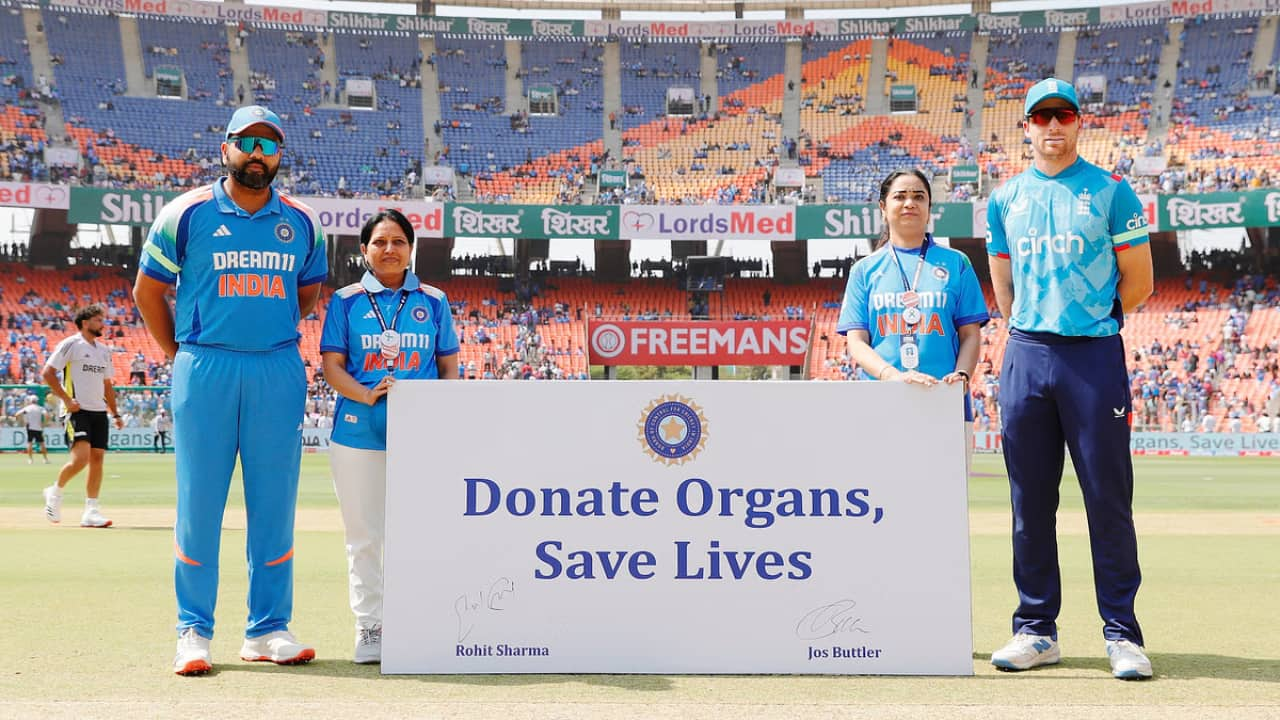 |
|
The recent India-England ODI series concluded with a heartwarming display of sportsmanship and social responsibility. Both teams, donning distinctive green armbands, participated in a significant initiative spearheaded by the Board of Control for Cricket in India (BCCI) and the International Cricket Council (ICC) chairman, Jay Shah. This initiative, 'Donate Organs, Save Lives,' aimed to raise awareness about organ donation and encourage individuals to pledge their organs. The visible display of support on the international stage provided a powerful platform to reach millions of viewers and amplify this critical message.
The campaign's success hinges on its strategic use of a popular platform – international cricket. The sheer popularity of cricket in India and England guarantees a massive audience reach, effectively transforming a sporting event into a vehicle for social change. The involvement of high-profile cricketers, including Virat Kohli and Shubman Gill, significantly amplifies the message and promotes its credibility among fans. The choice of green armbands served as a visually striking symbol, clearly communicating the campaign's message to the worldwide audience watching the match. These subtle yet powerful actions transcended the boundaries of the game itself, impacting lives far beyond the stadium.
The campaign's effectiveness can also be analyzed through its messaging. The carefully chosen slogans used by the players resonated with the audience, skillfully employing sports metaphors to create engaging and memorable calls to action. Kohli's call to 'Score the ultimate century,' for instance, deftly connected the concept of organ donation with the sporting world, presenting it not as a sacrifice but as an act of ultimate achievement. Similarly, Gill's analogy of being a 'captain of life' inspired viewers to take charge of their ability to positively influence the lives of others. The straightforward message about saving up to eight lives resonated powerfully, emphasizing the potential for a single decision to impact several families.
Beyond its immediate impact on raising awareness, the campaign also lays the foundation for long-term behavioral change. By making organ donation a topic of public discussion, particularly within a context of widespread visibility and support, the campaign normalizes the act, encouraging a more open and receptive attitude towards this life-saving measure. The combination of emotional appeals, impactful messaging, and high-profile endorsements created a powerful synergy, shaping public perception and potentially leading to increased registrations as organ donors. The long-term success will be measured not only in increased registrations but also in the lives saved through the resulting organ donations.
The 'Donate Organs, Save Lives' campaign serves as a successful example of how sporting events can be leveraged to promote vital social causes. The campaign was meticulously planned, employing a multi-pronged approach that capitalized on the popularity of cricket, high-profile endorsements, and impactful messaging. The visible commitment from both teams demonstrated a powerful commitment to social responsibility, inspiring a sense of collective action and encouraging individuals to consider this potentially life-saving act. The use of sporting metaphors to make a complex issue more accessible was a stroke of genius, fostering a more positive and participatory attitude towards organ donation. This campaign highlights the potential of sports to not only entertain but also to inform, educate, and ultimately save lives.
The impact of this campaign extends beyond the realm of sports, offering valuable lessons for other social awareness initiatives. The use of visible symbols, prominent endorsements, and emotionally resonant messaging can be successfully replicated to promote various health and social causes. This campaign offers a case study on how to effectively leverage the power of media and public personalities to create lasting positive change. It proves that effective advocacy necessitates strategic planning, careful consideration of the target audience, and the thoughtful application of innovative approaches. The success of this campaign inspires hope for future collaborations between sporting events and social causes, paving the way for further positive advancements.
Source: India, England wear green armbands to support BCCI's 'Donate Organs, Save Lives' campaign
